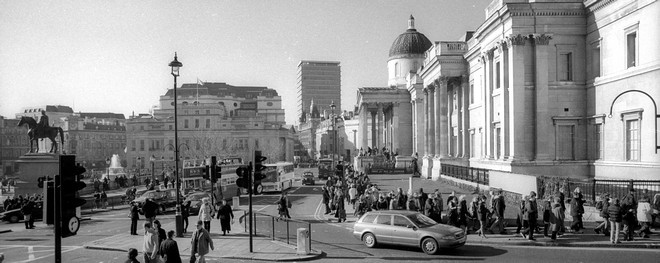
How did you get here?
You've somehow landed in my small and humble corner of the Internet, so firstly... welcome.
Secondly - let me explain a bit about myself and this website so that you can decide if it is the sort of place you want to look around. I can go on a bit so if you get bored just go straight to the pictures.
Who am I?
I am a carbon based megafauna based full time on my home planet of Earth, which is where I was born. I have a name, an age, and a gender.
I'm also an occasional amateur photographer, and I take pictures on film and digital, colour and black and white, using cameras that range from new to over a hundred years old.
My favourite types of photographs are ones taken on black and white film, and it is these photographs that this website is dedicated to.
What's Here?
This website is specifically for some of my photographs that meet the following strict rules:
- The picture had to be taken by me
- The camera had to be a vintage manual film camera
- The film in it had to be monochrome (black and white)
I hope you will spare a few minutes to have a flip through them, maybe you will see something that you like or that is of interest to you. If you find something, by all means ask me about it.
Expectation Management
Don't expect this website to be a repository for wondrous works of art, I am not nor profess to be a professional photographer. Being a professional photographer is hard, takes a lot of time planning, a lot of getting up early, a lot of skill, judgement and creativity. Oh - and persistence. Luck helps too.
I cannot and do not take photographs to dazzle people, make lots of money, or earn myself a global reputation for artistic magnificence. I just take photographs for me.
Analogue Photography
Every photograph on this website has come from monochromatic analogue film. Even in this digital dominated world, analogue photography strikes a chord with me that digital does not.
We are analogue beings, living in an analogue world, thinking in analogue, seeing in analogue. Capturing scenes in analogue too just makes sense to me. Digital has its place, and its a massive place. I couldn't show you my photographs without it, because these images are of course digitised copies of the analogue originals.
Formats and Cameras
All of the film cameras I use are generally old and simple manual ones at the lower end of the budgetary spectrum. The newest film camera I have is a wonderful 35mm Nikon N6006, dating from the early 1990's, but I still regularly use cameras from the 1930's and earlier.
I do use 35mm film sometimes as I love its versatility and practicality. A good film stock, with a good prime lens nicely stopped down (but not too far!) will lay a huge amount of detail down onto the emulsion, despite the small size of the format.
My preference is generally 120 roll film, exposing frames 6cm X 9cm in size. This negative size yields stupendous levels of detail, especially when taken using a high quality prime lens stopped down to its optimal aperture. The very nature of this format means you have to slow down as a photographer and think about the picture, be selective. You only get eight shots to a roll, and a roll is expensive when you consider its developing too. So you are encouraged to only take the best pictures, and to not rush it.
6x9 Photography takes you far away from the mind-set of "lets just take lots of photos of the scene, and not really think much about any of them, because the laws of probability state that at least one of them will turn out nice" which is all too easy a trap to fall into with Digital.
My favourite 6x9 camera is my Fuji GW690II. It is very basic, totally manual with no light meter. The lens is fixed at an equivalent of 50mm. It is heavy and cumbersome. But the optics are superb. With a sharp film, a sturdy tripod, and a good squinty aperture, the detail it captures is truly magnificent. Sadly though, all this detail is meaningless when these photographs are seen on a website. At less than a megapixel they could have come from any camera. Only when they are enlarged onto a generously proportioned print can the 6x9 format be fully appreciated.
I don't work with large format or ultra-large format sheet film cameras. Believe me I'd love to, but I can't justify the cost of the equipment, film and processing for my standard of photographs. A good 6x9 camera used properly yields all the detail I'm every likely to need.